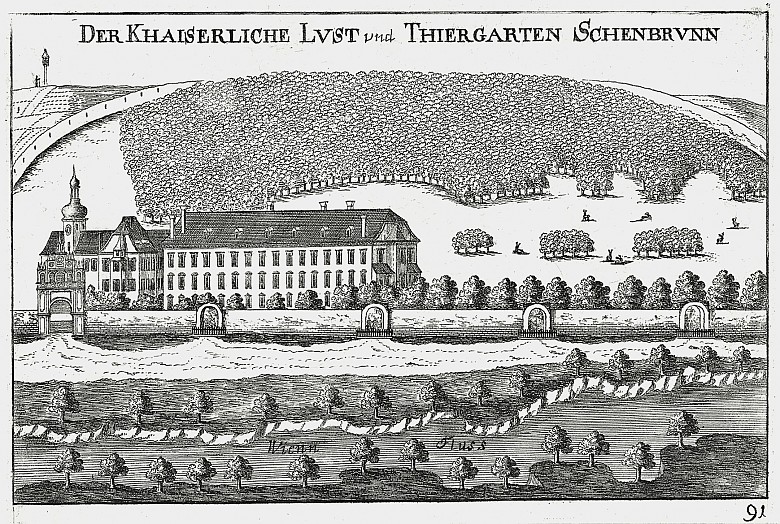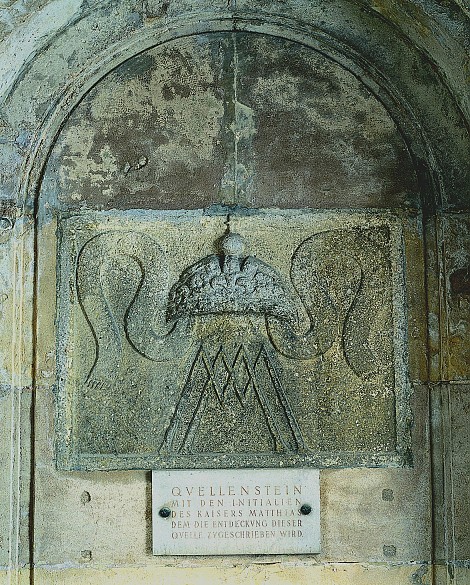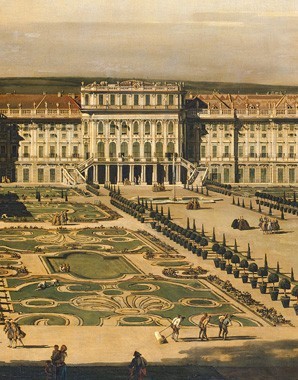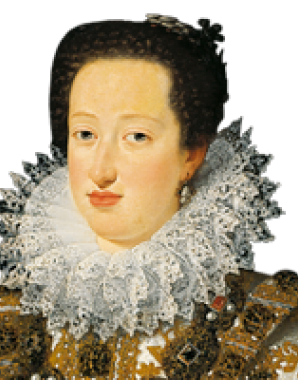Schönbrunn before ‛Schönbrunn’ – the beginnings
For a long time the beginnings of this famous palatial complex were shrouded in darkness, outshone in the truest sense of the word by its later Baroque splendour. It is only in the past few years that light has been cast on the early history of the estate, the original name of which was not ‛Schönbrunn’ but ‛Katterburg’.
Johann Joachim Müller. Entdecktes Statts-Cabinett, 1714 . After a contemporary description from 1660. Quoted from Iby, Elfriede; Koller, Alexander: Schönbrunn, Vienna 2000, 42A description of Schönbrunn Palace from 1660:
... planned in the Italian manner, built three storeys high, and furnished becomingly with paintings and other things. From the house we drove to the spring that gives the place its name ... the spring was finely set and kerbed ...
The grounds of the later palace complex were owned and administered from the twelfth century onwards by the abbey of Klosterneuburg and were referred to in the oldest sources by the field name of ‛Chatternberg’ or ‛Chaternburch’. The nucleus of Schönbrunn was an estate lying at the foot of a forested hill on the fringes of the Vienna Woods which included a mill driven by the water from the nearby River Wien.
Located not far from the city, its owners over the centuries were Viennese citizens. In the middle of the sixteenth century it was rebuilt as a stately country seat with a pleasance and vineyard, coming to be known as the Katterburg.
In 1569 the Katterburg fell into imperial hands when Emperor Maximilian II acquired the property and established a fenced-in game preserve here. Later the estate became known as Schönbrunn; according to a legend while out hunting one day Emperor Matthias is supposed to have discovered a beautiful spring (schöner Brunnen).
Under Eleonora of Gonzaga, the second wife of Emperor Ferdinand II, the estate acquired new significance. From her home in Italy the empress brought a number of important cultural impulses to Vienna: the Baroque musical culture at the Habsburg Court in particular owes its first heyday to her. Eleonora was extremely fond of Schönbrunn, and after it had been assigned to her as her dower residence, she had a palatial wing in the early Italian Baroque style added to the old manor house at the beginning of the 1640s. This new wing with its elongated shape was to be of decisive importance to the future palace, as recent excavations and research have shown. The palace in its present form was not, as previously assumed, built on a ‛greenfield’ site: the central section of the palace, as built by Fischer von Erlach after 1696, rests on the foundations of the earlier structure, which thus predetermined the basic disposition of the whole architectural ensemble.
Under Eleonora’s successor, namesake, niece and daughter-in-law, Eleonora of Gonzaga, wife of Emperor Ferdinand III, Schönbrunn continued to be a centre of court life, until the complex was laid waste by Turkish forces during the siege of Vienna in 1683.
















